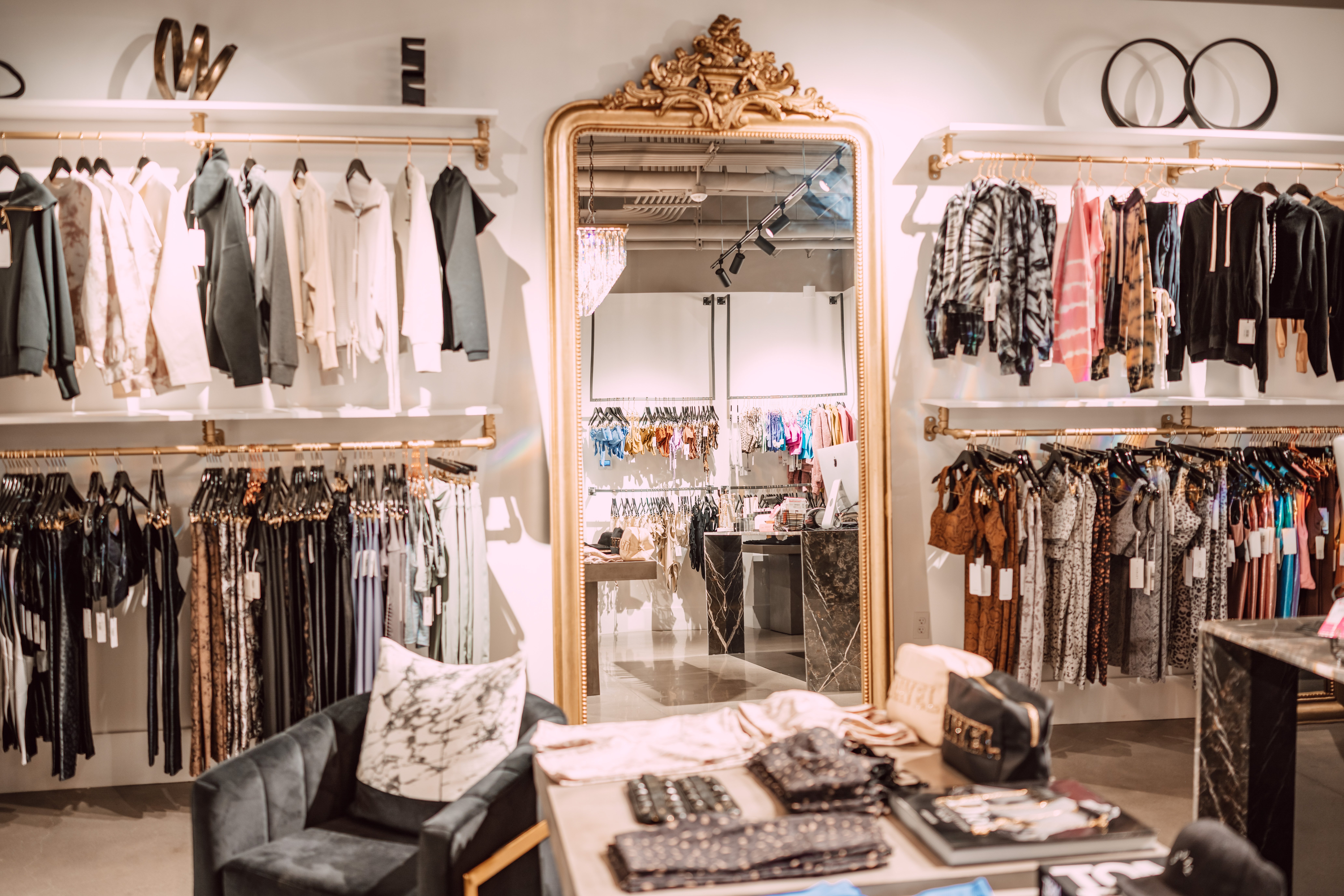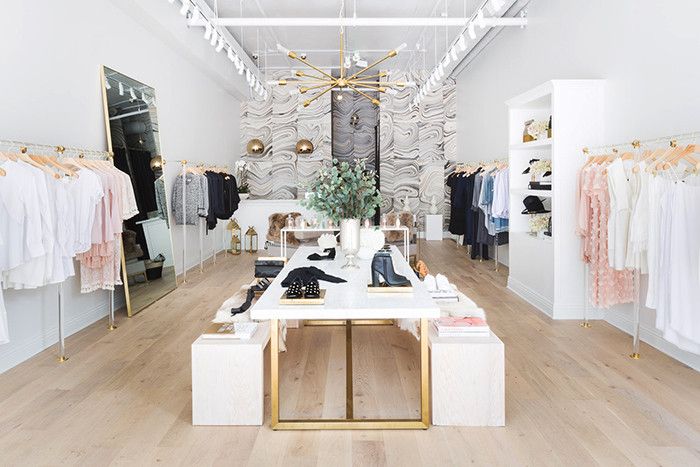The Increase of Online Purchasing: Finding Boutique Fashion at Your Fingertips
The Increase of Online Purchasing: Finding Boutique Fashion at Your Fingertips
Blog Article
Exploring the Advancement and Impact of Garments on Modern Style Trends
The development of apparel has dramatically influenced contemporary fashion patterns, merging historical criteria with sophisticated advancements. Renowned numbers like Coco Chanel and Yves Saint Laurent transformed the apparel industry by presenting principles that focus on comfort and access, which remain to resonate today. Technical strides in locations such as 3D printing and clever fabrics are redefining layout opportunities and customer experiences (boutique fashion). Additionally, the growing emphasis on inclusivity and sustainability is reshaping industry standards. As we think about these diverse impacts, one must question how these elements collectively redefine fashion's role in reflecting and shaping contemporary society.
Historic Style Influencers
In the tapestry of style history, particular figures have actually left an indelible mark, shaping the fads and styles that specify whole eras. Coco Chanel, an innovative developer, redefined ladies's style by presenting comfortable, stylish clothes that left from limiting corsets.
Elsa Schiaparelli is an additional crucial number, renowned for her avant-garde layouts that included surrealist art, working together with Salvador Dalí to develop whimsical items that challenged conventional looks. Her ingenious use of shade and strong patterns reverberates in modern fashion. Yves Saint Laurent, on the other hand, equalized haute couture with prêt-à-porter collections, bringing path styles to the masses and setting a criterion for contemporary ready-to-wear lines.
These dreamers, among others, not only changed fashion in their times but likewise set withstanding trends that resonate in today's apparel industry, giving a foundation upon which modern designers remain to innovate and develop. Their heritages emphasize the significance of imagination and daring in fashion's ever-evolving narrative.
Technological Innovations in Fashion
Amidst the dynamic landscape of the fashion business, technical advancements stand at the center of advancement, reshaping how developers develop and customers engage with style. The combination of 3D printing has actually reinvented layout procedures, allowing developers to trying out intricate structures and lasting products that were formerly impossible. This modern technology helps with rapid prototyping, minimizing waste and speeding up production times.

Smart fabrics, installing technology into fabrics, are likewise changing the sector. Advancements like temperature-regulating and self-cleaning fabrics offer enhanced functionality and convenience. Wearable modern technology, incorporating attributes like health and fitness monitoring and communication, adds a brand-new measurement to fashion, merging visual appeals with practicality.
Social Changes and Style
As technological improvements remain to reshape the apparel industry, social shifts are equally significant, redefining style and customer preferences. In recent years, the increase of social media platforms has increased the circulation of worldwide fashion trends, enabling varied cultural impacts to exist side-by-side and converge. This digital interconnectivity has helped with the rapid exchange of ideas, bring about a more diverse and comprehensive interpretation of style that reflects the complex nature of modern-day society.
Social awareness and gratitude have actually triggered developers to attract inspiration from a broader range of ethnic and historic contexts, incorporating typical themes with modern appearances. This combination has actually led to fashion that reverberates with a broader target market, advertising a feeling of identification and belonging across different demographics. Additionally, the raising need for personalization has driven brand names to use adjustable options, allowing consumers to reveal uniqueness while reflecting their social heritage.
Furthermore, moving social values have impacted style, with inclusivity and diversity coming to be main motifs. The sector has actually begun to embrace versions and influencers of numerous physique, ethnic cultures, and gender identities, tough standard appeal criteria. This improvement emphasizes the power of cultural changes This Site in shaping the future of style, as style becomes an extra genuine expression of cumulative and personal identity.
Sustainability and Modern Layout
While the apparel industry remains to evolve, the necessary for sustainability has actually come to be increasingly urgent, influencing contemporary design techniques. This change aims to attend to honest factors to consider and ecological concerns, bring about a reevaluation of standard manufacturing techniques. Designers are currently integrating lasting materials, such as natural cotton, recycled polyester, and biodegradable fabrics, into their collections, lowering the ecological footprint of style. The surge of slow-moving style, which emphasizes top quality over quantity, encourages consumers to spend in timeless pieces as opposed to transient patterns.
Furthermore, contemporary layout is characterized by its advancement in lessening waste and advertising circularity. Strategies such as Discover More Here zero-waste pattern cutting and 3D knitting are obtaining traction, enabling developers to produce garments with minimal fabric waste. In addition, a knockout post brands are taking on clear supply chains, guaranteeing liability and cultivating consumer trust fund. This approach not just alleviates environmental effect yet also improves the social obligation of style residences.

Future Trends in Style

Sustainability will certainly remain to be a driving pressure in shaping future fashion fads. The market is increasingly adopting environmentally friendly materials and moral production methods, replying to a growing consumer need for responsible techniques. Technologies such as bio-fabricated products and closed-loop recycling systems are set to redefine just how clothes is created and taken in, reducing environmental influence while preserving design and quality.
Social changes, including the increase of inclusivity and variety, will additionally play a pivotal duty. As culture ends up being extra familiar with social problems, style is expected to end up being a system for expression and change. Developers will likely concentrate on producing collections that mirror a broader array of identities and experiences, promoting representation and availability.
Verdict
The development of garments significantly affects modern-day style trends, where historical impacts combine with contemporary styles. Trick figures like Coco Chanel and Yves Saint Laurent have redefined design, while technical developments such as 3D printing and wise textiles broaden imaginative possibilities. Cultural changes towards inclusivity and sustainability urge brands to embrace honest techniques and embrace variety. This recurring advancement emphasizes fashion's function as a mirror to social worths and technical advancement, suggesting a future rich with advancement and inclusivity.
The evolution of clothing has actually significantly influenced modern style fads, combining historical precedents with advanced advancements.In the middle of the dynamic landscape of the fashion industry, technological advancements stand at the leading edge of innovation, improving exactly how designers create and customers involve with fashion.While the style market continues to advance, the vital for sustainability has become significantly immediate, influencing modern layout methods. As sustainability becomes ingrained in contemporary design, it leads the method for a more mindful and responsible fashion market.
The evolution of apparel dramatically influences contemporary style patterns, where historical influences combine with modern styles.
Report this page